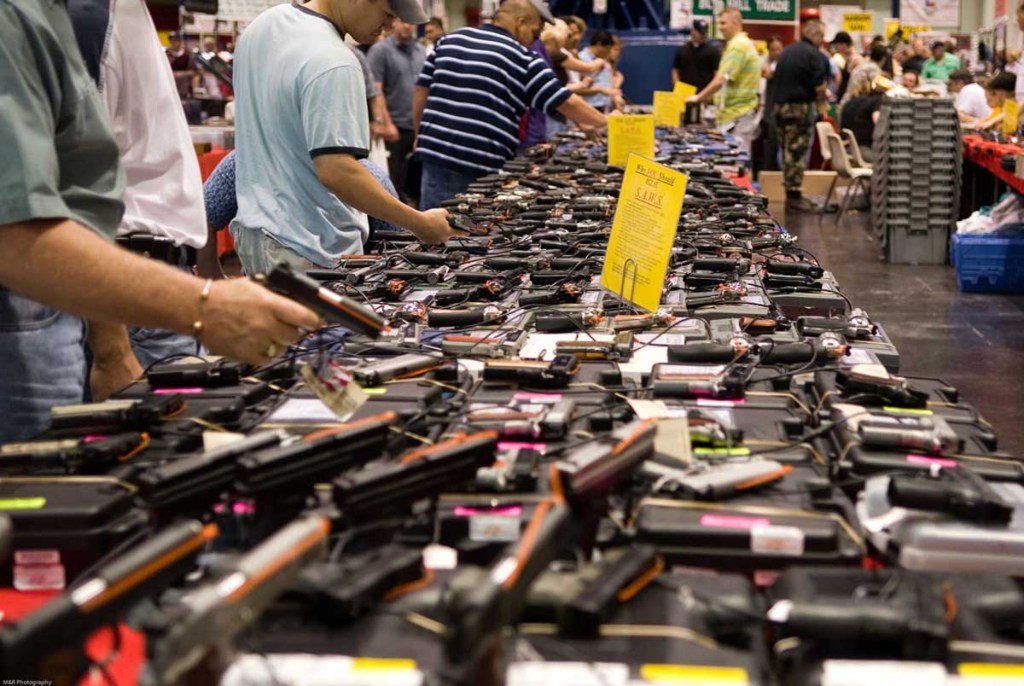Guns in the United States: One for every man, woman and child — and then some
Published 12:30 pm Tuesday, October 6, 2015

- 40 million more guns than people.
WASHINGTON — It’s tough to know exactly how many guns we have in the United States. Most estimates of the number of guns in the U.S. use federal tallies of the firearms manufactured, imported and exported by U.S. gunmakers. A 2012 Congressional Research Service (CRS) report published exactly one month before the Sandy Hook school hooting put the number of civilian firearms at 242 million in 1996, 259 million in 2000, and 310 million as of 2009.
If that 310 million number is correct, it means that the first year of Barack Obama’s presidency was an inflection point: it marked the first time that the number of firearms in circulation surpassed the total U.S. population.
Data on gun manufacturing from the Bureau of Alcohol, Tobacco, Firearms and Explosives on gun manufacturing now goes through 2013.
Adding up new guns and imports and subtracting gun exports, in 2013 there would have been roughly 357 million firearms in the U.S. — 40 million more guns than people. This is just an estimate. These numbers are blind to firearms that enter and exit the country illegally, and to guns that break down, or are lost or destroyed.
Philip J. Cook of Duke University suspects that estimates based on the ATF numbers don’t properly account for this type of attrition. He’s estimated that roughly 1 percent of the American gun stock gets destroyed, lost or broken in a given year. Applying that factor retroactively back to when the ATF first began keeping records in 1899, that would put the civilian firearm total at something like 245 million as of 2011, he said.
Other estimates downplay the effect of attrition. In 2007, the global Small Arms Survey estimated there were 270,000 civilian firearms in the U.S. Gary Kleck, a criminologist at Florida State University, says it’s difficult to model the effects of attrition.
“Guns are simple machines made of extremely durable materials,” he said in an email, “yet are both dangerous and valuable enough that their owners would take more-than-average care to avoid losing them.”
Regardless of the actual number of civilian firearms in circulation, there’s no ambiguity around one crucial fact: U.S. gun manufacturers have drastically increased their output during the Obama years. In 2009, according to the ATF, gunmakers produced 5.6 million guns. By 2013 their annual production had just about doubled, up to 10.9 million guns that year.
FSU’s Kleck calls this an “Obama effect.” High-profile shootings and talk of changing gun laws “motivates gun owners to get more guns, and perhaps some non-owners to get one ‘while the getting is good,'” he said. This is despite the fact that Congress has not passed any changes to federal firearm legislation since early 2008.
It’s important to note that even as the number of guns has increased since the early-to-mid 90s, the per-capita gun homicide rate has fallen by nearly half over the same time period. On the other hand, it’s also true that when you make comparisons among states and countries, you see that places with more guns have more gun homicides, as research from the Harvard School of Public Health shows.
These two seemingly unreconcilable facts form the factual basis for much of the contemporary gun policy debate. Defenders of gun rights can point to falling homicide rates and rising gun numbers and argue that the solution to gun violence is more guns. Gun control advocates, meanwhile, can point out the correlations between gun ownership and gun crime and push for tighter restrictions on gun ownership.
Compounding the difficulty is that now, after years of high-profile killing sprees and vitriolic public debates, each side is deeply skeptical that the other is acting in good faith. Even modest policy proposals, like expanded background checks supported by many members of the National Rifle Association, fail to make it through Congress.
Is there a way to reconcile these divisions? It’s hard to tell. I keep coming back to this quote, from the Economist earlier this year in response to the Charleston, S.C., massacre.
“Those who live in America, or visit it, might do best to regard [mass shootings] the way one regards air pollution in China: an endemic local health hazard which, for deep-rooted cultural, social, economic and political reasons, the country is incapable of addressing.”

